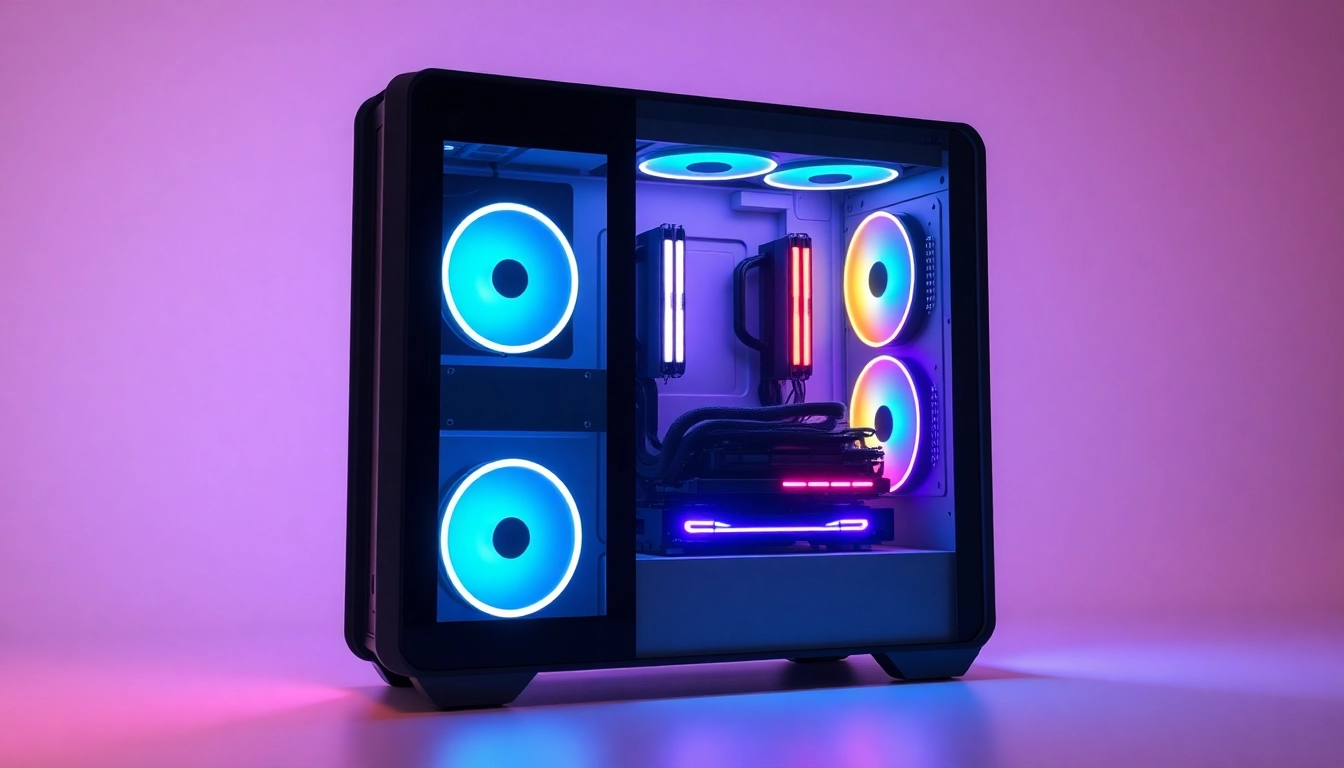Understanding Thermal Management Materials
In the ever-evolving world of electronics, managing heat effectively has become a paramount concern for manufacturers and engineers alike. As devices become smaller and more powerful, the heat they generate can compromise performance, longevity, and safety. This is where thermal management materials come into play. These materials are crucial for dissipating heat and ensuring that electronic components operate within their optimal temperature ranges.
Definition and Importance of Thermal Management
Thermal management refers to the systematic control of temperature in electronic devices to prevent overheating and to enhance performance. It encompasses various aspects, including heat dissipation, heat conduction, and thermal insulation. The importance of effective thermal management cannot be overstated; inadequate thermal management can lead to component failure, reduced efficiency, and even safety hazards. By utilizing appropriate thermal management materials, manufacturers can extend the service life of their products, improve reliability, and increase overall efficiency.
Types of Thermal Management Materials
Thermal management materials can be categorized into several distinct types, each serving a unique purpose in the management of heat:
- Thermal Interface Materials (TIMs): These materials are applied between two surfaces, such as a heat sink and a semiconductor, to enhance thermal conductivity. Examples include thermal greases, pads, and adhesives.
- Phase Change Materials (PCMs): These substances absorb and release thermal energy during phase transitions (e.g., from solid to liquid). They are used to regulate temperature spikes effectively.
- Thermal Adhesives: They not only bond components together but also provide efficient heat transfer, thereby reducing thermal resistance.
- Gap Fillers: These materials fill the air gaps between components, assisting in maintaining effective heat conduction.
- Thermal Tapes: These are used to bond heat-sensitive components together while ensuring efficient heat conductivity.
Applications in the Electronics Industry
The applications of thermal management materials are numerous within the electronics industry:
- Consumer Electronics: Smartphones, laptops, and tablets generate significant heat which, if not managed, can lead to performance degradation.
- Automotive Applications: Electric vehicles rely on effective thermal management to optimize battery performance and safety.
- Data Centers: Excessive heat generation can lead to server failures; hence thermal management materials play a critical role in cooling systems.
- Telecommunications: High-frequency devices generate heat, necessitating robust thermal management to ensure reliable function.
- Industrial Equipment: Machinery and equipment operating under heavy loads benefit from effective heat management to maintain operational efficiency and safety.
Key Features of Thermal Management Materials
Thermal Conductivity Explained
Thermal conductivity is a critical property of thermal management materials. It represents the ability of a material to conduct heat, measured in watts per meter kelvin (W/mK). High thermal conductivity is desirable as it leads to efficient heat transfer from hot components to heat sinks or other dissipation methods. Common materials that exhibit high thermal conductivity include:
- Copper: Known for its exceptional thermal conductivity, making it a preferred choice for heat sinks.
- Aluminum: A lightweight alternative often utilized in various electronic applications.
- Graphite: A material with remarkable thermal conductivity and is often used in heat spreaders.
- Silicone-based Materials: These often serve as TIMs due to their flexibility and good thermal properties.
Durability and Environmental Considerations
For thermal management materials to be effective, they must not only conduct heat efficiently but also demonstrate durability under various environmental conditions. Factors such as temperature fluctuations, humidity, and exposure to chemicals can degrade material properties. Thus, selecting materials that withstand these conditions is essential. For instance:
- Silicone Materials: These can endure high temperatures and remain functional in moist environments.
- Polymer-based materials: Depending on their composition, some can resist degradation from environmental factors.
Customization Options for Specific Needs
Customization plays a vital role in the effectiveness of thermal management materials. With diverse applications and needs in the electronics sector, manufacturers often seek tailored solutions that meet specific thermal performance requirements. Customization can include:
- Thickness: The thickness of thermal pads or tapes can be adjusted to optimize their functionality.
- Composition: Different formulations can be developed for varying thermal conductivity and flexibility requirements.
- Shapes and Sizes: Die-cutting or molding can produce materials that fit specific component geometries, ensuring maximum contact area for heat transfer.
Common Challenges in Thermal Management
Identifying Heat Sources in Electronics
Identifying heat sources is the first step in effective thermal management. Modern electronics often have multiple components that contribute to heat generation. Effective diagnostic tools, thermal imaging cameras, and thermal testing equipment come in handy for identifying high-temperature zones and their causes. Common heat sources include:
- Power supplies
- Microprocessors
- Graphics cards
- High-frequency power amplifiers
Overcoming Thermal Resistance Issues
Thermal resistance arises when heat flow is impeded by poor thermal contact or inadequate material properties. To overcome these challenges, several steps can be taken:
- Improving Surface Contact: Ensure that surfaces are smooth and clean to minimize air gaps between components.
- Utilizing Better TIMs: Select higher-performance thermal interface materials that offer lower thermal resistance.
- Incorporating Heat Spreaders: This technique can help remove heat from localized sources effectively.
Strategies for Effective Heat Management
Implementing comprehensive heat management strategies is essential to ensuring long-term reliability and performance of electronic systems. Here are several effective strategies:
- Active Cooling: Use fans or liquid cooling systems to enhance heat dissipation actively.
- Passive Cooling: Consider heat sinks and heat spreaders as non-active methods to manage heat.
- Thermal Insulation: Insulation materials can help minimize thermal impact on sensitive components.
Best Practices for Selecting Thermal Management Materials
Evaluating Performance Metrics
When selecting thermal management materials, it is crucial to evaluate their performance metrics rigorously. Key performance indicators include:
- Thermal Conductivity: Assessing the material’s ability to transfer heat efficiently.
- Thermal Resistance: Understanding the resistance posed to heat flow is critical for effective heat management.
- Service Life: How long the material lasts under expected operating conditions without performance degradation.
- Ease of Application: The application method should be simple and adaptable to the manufacturing process.
Cost vs. Quality Considerations
When selecting thermal management materials, striking a balance between cost and quality is paramount. While cheaper materials may initially seem appealing, they can lead to higher costs in the long run due to:
- Increased failure rates
- Shortened lifespans of electronic components
- Possible damage to surrounding components due to overheating
Investing in high-quality materials can ultimately lead to greater reliability and performance, thus providing better value.
Vendor Selection Criteria
Choosing the right vendor for thermal management materials is critical. Relevant criteria include:
- Reputation: Look for manufacturers with a proven track record in producing reliable thermal materials.
- Technical Support: Vendors should provide expertise in material selection tailored to specific applications.
- Customization Capabilities: Ensure that they can meet your unique specifications for thermal management solutions.
- Testing and Certification: It’s essential to source materials that have undergone rigorous testing for performance and safety.
Future Trends in Thermal Management Technologies
Advancements in Material Science
Recent advancements in material science are paving the way for innovative thermal management solutions. Researchers are exploring new compounds that exhibit superior thermal properties, including:
- Metal Matrix Composites: These materials offer enhanced thermal conductivity while reducing weight, making them suitable for various applications.
- Nanocomposites: Utilizing nanotechnology to create materials that can drastically improve heat conduction.
- Advanced Phase Change Materials: Next-generation PCMs with higher heat storage capacity providing better temperature regulation.
Integration with Smart Technologies
The integration of smart technologies, such as IoT and AI, into thermal management practices will revolutionize the industry. Predictive maintenance systems can analyze thermal data in real-time, allowing manufacturers to:
- Anticipate failures before they occur
- Optimize cooling strategies based on usage patterns
- Enhance performance through machine learning algorithms that adapt to varying operational conditions
Predicting Market Needs and Innovations
Finally, understanding market needs is crucial for driving innovation in thermal management technologies. As consumer electronics and other industries continue to shrink in form factor while increasing in capability, demand for advanced thermal management solutions will grow. Manufacturers must stay ahead by:
- Conducting market research to understand future trends
- Investing in R&D to develop new materials and techniques
- Collaborating with industry partners to innovate and implement new solutions



